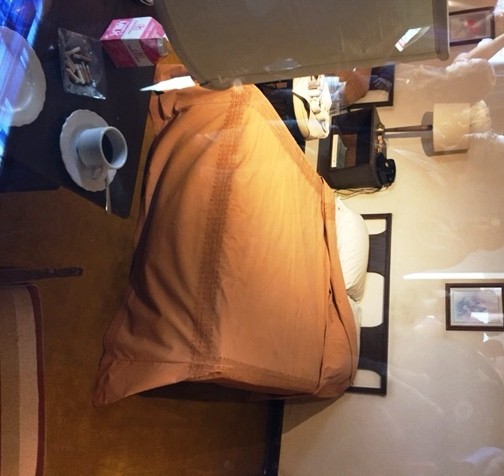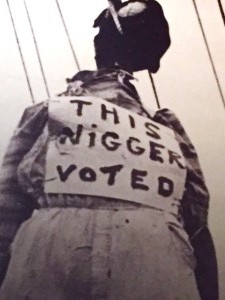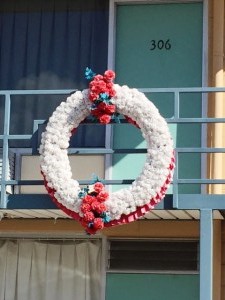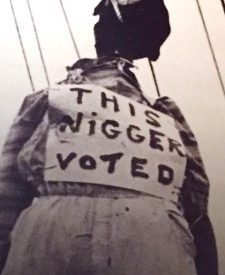 Lorraine Motel room 306 as it appeared moments after Dr. Martin Luther King, Jr. exited his room to speak with his associates about dinner plans for the evening, April 4, 1968. He never returned to this room. 2016 Harold Michael Harvey
Lorraine Motel room 306 as it appeared moments after Dr. Martin Luther King, Jr. exited his room to speak with his associates about dinner plans for the evening, April 4, 1968. He never returned to this room. 2016 Harold Michael Harvey
Room 306 at the Lorraine Motel is forever frozen in time. It is as it was shortly after 6:00 pm central standard time on April 4, 1968.
Moments prior to 6:00 pm, Reverend Dr. Martin Luther King, Jr. had just emerged from the room where he had been most of the day. He walked onto the second floor balcony of the motel that serviced the black community. The Lorraine Motel was a black owned motel during the system of segregated public accommodations and although Dr. King?s work in the thirteen years since the Montgomery Bus Boycott had broken down those barriers, he continued to patronize black businesses.
According to Reverend Dr. Babs Stinson Phillips, before Dr. King walked out of room 306, she had been engaged in a telephone conversation with him. Phillips had briefly worked as a private secretary for Dr. King during the last 90 days of his life.
King, according to Dr. Philips, had called to tell her to pay special attention to a speech he had given the night before at the Masonic Temple in Memphis.
During the conversation, she overheard loud sounds in the background. It appeared that several people were talking and having fun. Dr. King told her to hold on the line as he was going outside but would be right back.
The next voice she heard on the phone line to room 306 was the voice of who she believed to be Rev. Jesse Jackson. The voice repeatedly said, ?Operator, Operator, Operator!?
Because Dr. King had given her explicit instructions to hold onto the line, she refused to hang up the phone and clear the party line for the person she now believes was Jesse Jackson.
?Hang up the phone, hang up the phone, hang up the phone. I need to get a clear line,? the voice yelled!
Like the undisturbed room 306, Dr. Phillips? mind is frozen in time, wondering what would have happened had she released the line earlier. Would Jackson have been able to summon help for Dr. King in time to save him?
We will never know the answer to that question. King was not pronounced dead until an hour later, shortly after 7:00 pm central standard time.
 This exhibit on display at the Civil Rights Museum in Memphis depicts what happened to black men who dare to vote in the South. Photo 2016 Harold Michael Harvey
This exhibit on display at the Civil Rights Museum in Memphis depicts what happened to black men who dare to vote in the South. Photo 2016 Harold Michael Harvey
As we approached the 50th Anniversary of this fateful day in 1968, I took a trip to room 306 at the Lorraine Motel. This was my second visit to room 306. In 1997, before the museum was built I had toured the Lorraine Motel with Johnnie Cochran during the annual meeting of the National Bar Association. We were allowed to walk inside room 306.
What struck me was the sight of the last cigarettes that King smoked, the butts, still in the ashtray, undisturbed. Prior to that time, I had no idea that Dr. King was a smoker. I had learned in 1972 from a college political science professor, Dr. Levi Oliver, that King preferred beverage was Scot chased with milk.
My recent trip was different. To get to room 306, I first had to navigate myself through the Civil Rights Museum which has been built on the site of the Lorraine Motel. A slow tour through the museum leads visitors through the historical maze of the struggle of African people for equality in the United States of America.
It is a meandering tour, torturous in spots, notorious in other segments, heartwarming in others; yet dreadful all the way as one knows the end of the tour leads to room 306.
If the tour pulled at my range of emotions, I could see etched on the faces of white American patrons, worry and concern, wondering how we as a nation could treat other human beings with such callous indifference to the ideals of democracy upon which America was founded.
Once completing the tour up to room 306, which now is viewed through a Plexiglas wall, you are invited to walk across the street and tour the flop house, which is also a part of the civil rights museum, where James Earl Ray is believed to have fired the fatal shot that killed Dr. King, fearing I would lose it, I passed on this tour of history.
 A wreath hangs on the balcony in front of room 306 in memory of Dr. Martin Luther King, Jr. Photo 2016 Harold Michael Harvey
A wreath hangs on the balcony in front of room 306 in memory of Dr. Martin Luther King, Jr. Photo 2016 Harold Michael Harvey
Room 306, frozen in time inside my mind these past 50 years.
Harold Michael Harvey is an American novelist and essayist, the author of Paper puzzle and Justice in the Round. He can be contacted at haroldmichaelharvey.com.


